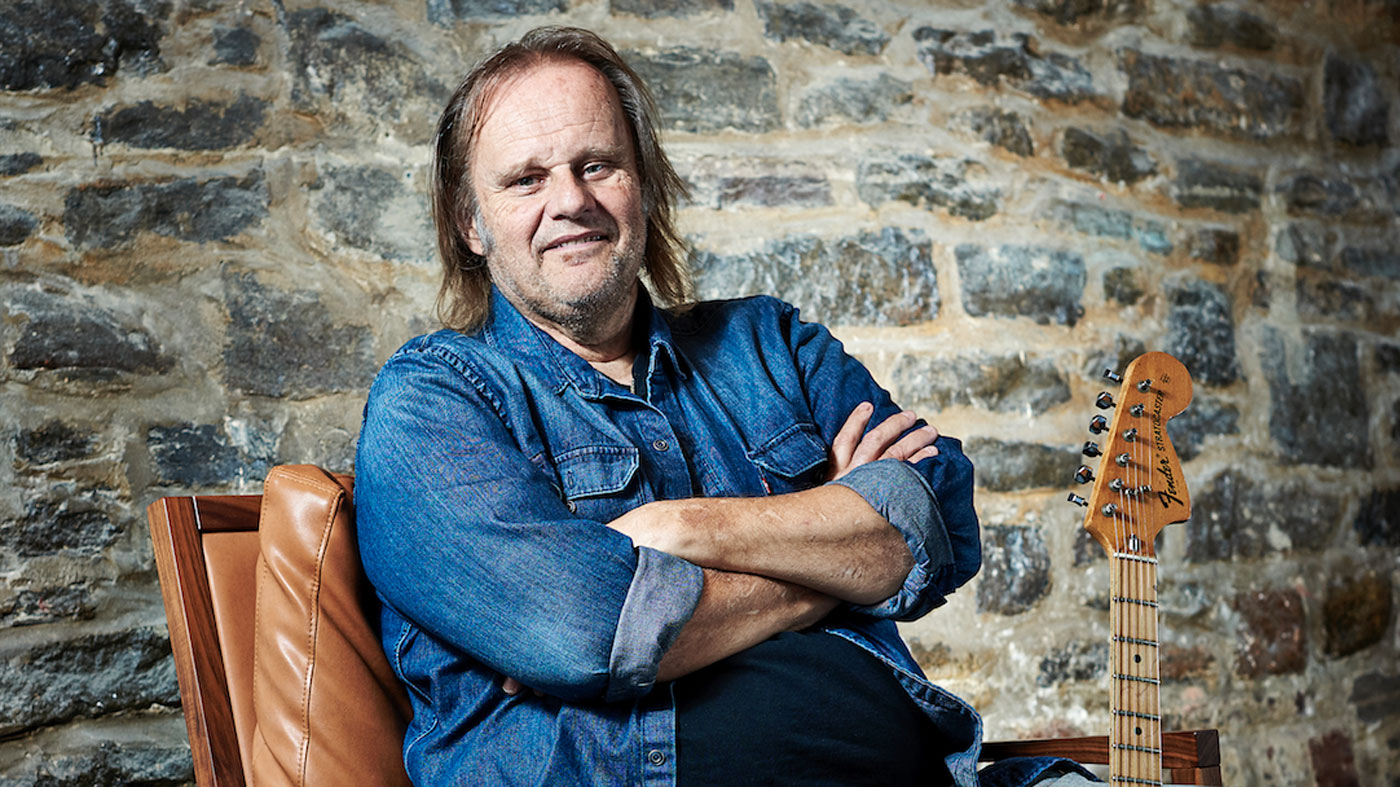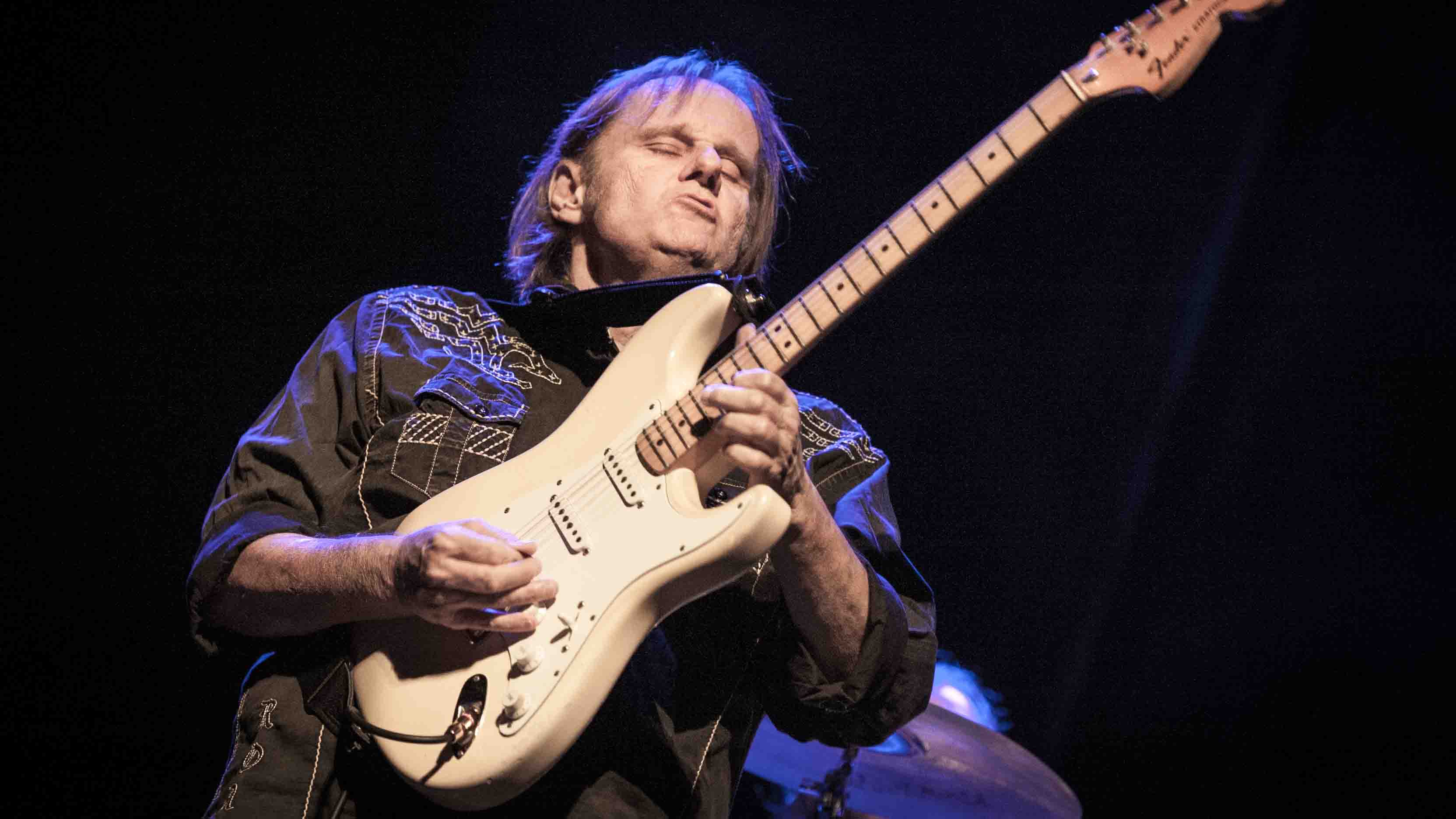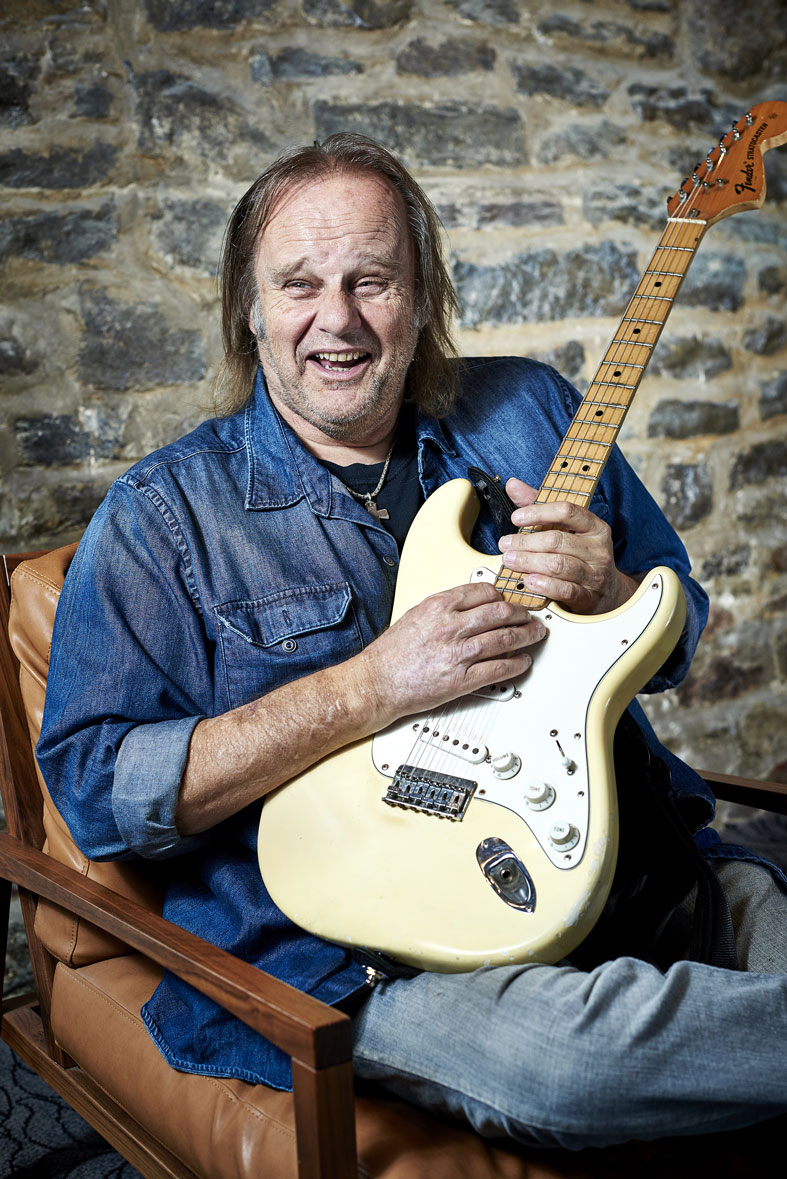Walter Trout: “I just started calling people. It seemed like a good idea, y’know?”
The bluesman discusses his collaboration with 14 guitar stars, including Eric Gales, Warren Haynes and Joe Bonamassa

Managing to find a narrow window in this indefatigable bluesman’s hotel, gig, planes, trains and automobiles lifestyle, we pull up a chair to talk about the travelling circus of top-drawer players that wound up on his latest album...
Walter Trout’s latest album, We’re All In This Together, is a star-studded release, to put it mildly. No fewer than 14 of the world’s best players appear alongside the veteran guitarist, including Robben Ford, Eric Gales, Sonny Landreth, Warren Haynes and Joe Bonamassa - and they cook up a blues rock storm. The CD overflows with good vibes and is alive with some seriously joyous music-making.
“Joyous is the perfect word,” says Walter when we speak to him at his hotel pre-gig. “I wanted to get past the darkness and express the joy of being alive and of creating music with my friends.”
We’re All In This Together puts the past well and truly behind him with his Strat ablaze, celebrating, as Trout puts it, “The sheer joy of being alive!”
It’s a stark contrast to his previous studio album, Battle Scars, which centred upon his recovery from the illness that nearly cost him his life in 2013. “Those songs were written just as therapy,” Walter continues. “It was either go to a psychiatrist and sit on a couch and talk about what happened to me or just write about it in a song.”
We’re All In This Together puts the past well and truly behind him with his Strat ablaze, celebrating, as he puts it, “The sheer joy of being alive!” Obviously, a project of this magnitude called upon some strategic planning, but we were curious about how the idea to collaborate with so many musicians came about in the first place.
Where exactly do you start with an undertaking like this one?
“They’re all friends of mine, but I didn’t start off with the idea of doing a whole album of duets. I did a gig at Carnegie Hall with Edger Winter and Kenny Wayne Shepherd and we were sitting around in the dressing room and I just happened to say, ‘Hey, it would be great to record something together,’ and they went, ‘Yeah, yeah, it would be great…’ I thought that was two great guys to have on a record. Then I played in Toronto at the Jeff Healy memorial show and Sonny Landreth and Randy Bachman were there. We shared a dressing room and I just happened to talk to those guys. So I got four great guys.
Want all the hottest music and gear news, reviews, deals, features and more, direct to your inbox? Sign up here.
“Then I was in LA and I did a video for The Supersonic Blues Machine and we went out and had dinner and I was sitting there with Warren Haynes and Robben Ford and I happened to mention to those guys, ‘Whaddya think?’ and they said, ‘Yeah… Let’s do it!’ Now all of a sudden I’m like, ‘Wow, this is shaping up’. Then I just started calling people. It seemed like a good idea, y’know?”

Circling back
You’ve collaborated with other musicians before, on your album Full Circle.
“That was in 2005. Full Circle had a certain concept behind it and it was this: ‘Hey, man - you come in the studio, we set up, you and I sit down, we write a song together and we record it with the band’. Boom! In, out, live. This one, it wasn’t going to happen like that.
“I had some guys who wanted to be on Full Circle but they told me they couldn’t get to LA. So I said, ‘No, this is a certain concept I’m trying’, I don’t think it had ever been done before. John Mayall came in the studio and we wrote two songs and recorded them in three hours, y’know? This one, I couldn’t do that. Kenny Wayne said he’d love to do it but he was in Louisiana, the same with Sonny Landreth. So I couldn’t approach it the same way, this had to be done with modern technology.”
There are 14 guests... That was a logistical nightmare
So many of the featured musicians recorded their parts remotely?
“There are 14 guests: four of them were in the studio with us, the other 10 we had to send them the track and they sent it back. That was a logistical nightmare, because all these guys are touring, so I left that up to my wife. She had to get in touch with all these guys, find out where they were going to be on what day and when they would have time to do it, then she’d have to find them a studio, an engineer and set the whole thing up. She had to let the producer know that he had to send a track to this guy at this studio… that was the hard part. Me, it was just write a song, record the track and there we go. I got it to the label two months late because of the problems of scheduling.”
You wrote each track specifically with the guest artist in mind - how did that work out?
“Let’s take for example, Joe Bonamassa. Joe’s done a lot of albums of blues, but I think of him as a blues-rocker; he kinda starts with the blues and he takes it somewhere else. I had two ideas: we do a slow, minor blues or a heavy blues rockin’ tune. I sat down and kinda goofed around with both, I came up with the title track and I thought, ‘This is right up his alley, he’s gonna blaze on this thing and I can blaze on this thing, too.’ He got off, man; what you hear on the record is the first take - you hear the rehearsal! No overdubs, no fixes, spontaneous. We mapped it out, let’s give it a shot and at the end I yelled to Eric [Corne, producer] ‘Did you record that?’ and he said, ‘Yeah!’ and we all laughed and said, ‘No need to do that over again’.”

Trapp's track
One of the highlights on the album for us is Ain’t Goin’ Back with Sonny Landreth…
“I know Sonny well, I’ve played on stage with him and I will preface this by saying that Sonny Landreth is the greatest slide player that ever walked the face of the earth. He’s in a class of his own and then there’s everyone else. I think he’s an alien; what he does with a slide, it’s not possible to do.

“When you’re on stage, you’re watching him and you’re hearing what’s coming out of the amp it’s like, ‘What?’ But he does a lot of blues, a Louisiana musician, very influenced by New Orleans, he does zydeco kind of stuff, he does a little bit of everything. I came up with two or three different approaches for him - one was going to be a sort of Elmore James thing - and we sort of narrowed it down to the song that we came up with. I sent him the track and he sent it back, saying, ‘I don’t know if it’s any good… if it sucks, just let me know and I’ll do it over again’. I listened to it and said, ‘No, man - it’s fucking awesome!’”
What was it like working with John Mayall again on Blues For Jimmy T?
“Y’know ‘Jimmy T’ is Jimmy Trapp, and he was the guy that I started my band with and he was my best friend for 30 years. We played in a bar band together for two years - a two-year run in a nightclub in California, five hours a night, six nights a week. We came out of it rather mentally ill, there were lots of substances involved. We were young; that was in 1977.
“But he started my band with me, he’s on all my first albums and he passed away in 2005 at the age of 52. It’s taken me a long time to deal with it and to do that song about my best friend with someone who I not only regard as my mentor but also somebody I regard as a sort of surrogate father to me… That’s probably the most emotional song on there for me and it’s difficult to listen to sometimes.”
SWD for WT

You are always linked with that famous nicotine yellow Strat but in recent years, you’ve turned to a custom S-type...
“This Strat is a mutt. There’s a guitar builder in San Diego called Scott Lentz who makes beautiful guitars and he built the body to be very light because that old Strat of mine weighs more than a Les Paul and it had pulled my shoulder to the extent that I had lost the use of my left arm. So I had to get therapy and retrain the muscles and my fingers. Scott built me this guitar that’s very, very light; it’s the lightest guitar I’ve ever held, really.
There’s an amazing young group of guitar players out there moving up through the ranks and keeping this stuff alive
“I didn’t quite groove with the neck he had made and so I took a neck off one of my other Stratocasters and Seymour Duncan said he’d make me some pickups that sound just like the ones on the old Strat. So he sent them over and I’m proud of them. If you take them out the guitar they say ‘SWD for WT’ and if you set up my rig in my garage and A/B the two guitars, it’s hard to tell the difference. The new one is probably not quite as warm as the old one on the neck pickup, but on the bridge pickup it’s got more balls. But they’re very, very close. I can’t really tell a lot of difference.”
What do you think about the current state of blues on today’s world stage?
“I think it’s really healthy, y’know? There’s an amazing young group of guitar players out there trying to do this stuff and moving up through the ranks and keeping this stuff alive. I could mention names - there’s probably some I’d forget - but a lot of them are from this country [the UK]. You got Danny Bryant, Laurence Jones, Mitch Laddie, Aynsley Lister, Ian Parker, Joanne Shaw Taylor, Stevie and Alan Nimmo… Those are the ones that just come to mind, right off the top of my head.
“Tonight I have a 14-year-old kid who’s going to sit in and I had a 15-year-old the other night who got up and played his ass off. I try to nurture young musicians, help them out. I think there’s a great crop of players out there and they’re going to keep this stuff going because they’re going to attract younger audiences. My audience is getting older, as I am; I look out and everybody looks like my band - mid-60s, overweight and losing their hair!”
Walter Trout’s current album We’re All In This Together is available now via Provogue/Mascot.

